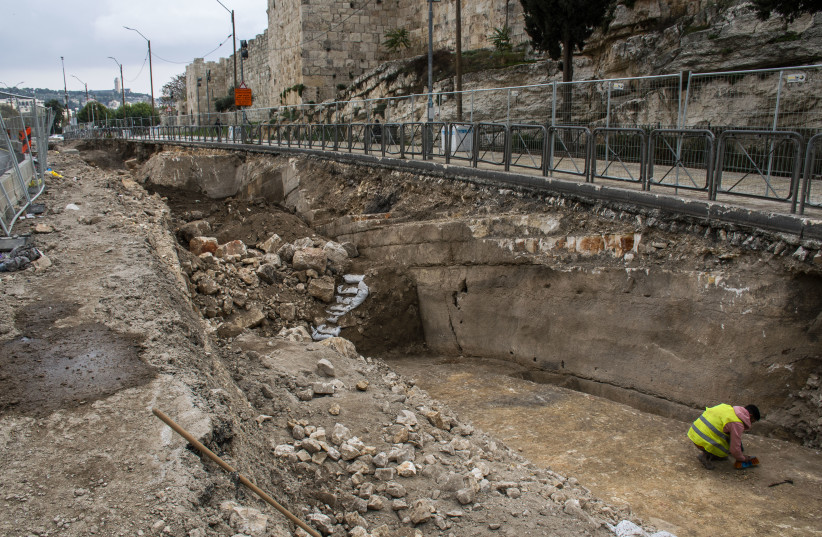Archaeologists stunned at ancient moat, handprints found in Jerusalem

This moat, now dry, was believed to have kept the first Crusaders from breaching the city of Jerusalem.
An ancient moat surrounding the Old City of Jerusalem was recently uncovered by archaeological experts from the Israel Antiquities Authority (IAA). The discovery was made as a contracting company prepared for planned infrastructure work in the capital.
Construction revealed the ancient moat, which measures approximately 10 meters (33 feet) wide and between two to seven meters (6.5-23 feet) deep. The moat surrounded the Old City of Jerusalem in its entirety. The 1,000-year-old moat was accompanied by handprints adjacent to the structure.
Zubair Adawi, director of the excavations at the IAA, uncovered the moat and handprints underneath Sultan Suleiman Street. The street runs adjacent to the city walls, leading experts to believe that the moat was built to prevent enemies from breaking into Jerusalem and invading it.
“Moats, usually filled with water, are well-known from fortifications and castles in Europe, but here the moat was dry, its width and depth presenting an obstacle slowing down the attacking army,” Adawi said.
The city walls we see today in the Old City were erected in the 16th century by Turkish Ottoman Sultan Suleiman I.
surrounded the ancient city
IAA Jerusalem regional director Dr. Amit Re’em said “The earlier fortification walls that surrounded the ancient city of Jerusalem were much stronger. In the eras of knights’ battles, swords, arrows and charging cavalry, the fortifications of Jerusalem were formidable and complex, comprising walls and elements to hold off large armies storming the city.”
Why would ancient Jerusalem need a moat to defend itself?
The moat is believed to have kept the First Crusaders from breaching the city. Historians writing during the age of the First Crusade placed the fighters at the walls of Jerusalem in June 1099. It took the fighters approximately five weeks to cross the moat after tedious strategic planning, archaeologists involved with the excavation said.
After finally crossing, Crusaders were met with force and bloodshed by Jews and Muslims defending the city.
“Armies trying to capture the city in the Middle Ages had to cross the deep moat and behind it two additional thick fortification walls, while the defenders of the city on the walls rained down on them fire and sulfur,” Re’em said.
“As if this wasn’t enough, there were secret tunnels in the fortifications, some of them uncovered by the Israel Antiquities Authority archaeologists in previous excavations, whereby the city defenders could emerge into the moat and attack the enemy by surprise, and then disappear back into the city.”
As for the handprints, they remain a mystery.
“Does it symbolize something? Does it point to a specific nearby element? Or is it just a local prank?” one of the archaeologists asked. “Time may tell.”
Jerusalem Post Store
`; document.getElementById("linkPremium").innerHTML = cont; var divWithLink = document.getElementById("premium-link"); if (divWithLink !== null && divWithLink !== 'undefined') { divWithLink.style.border = "solid 1px #cb0f3e"; divWithLink.style.textAlign = "center"; divWithLink.style.marginBottom = "15px"; divWithLink.style.marginTop = "15px"; divWithLink.style.width = "100%"; divWithLink.style.backgroundColor = "#122952"; divWithLink.style.color = "#ffffff"; divWithLink.style.lineHeight = "1.5"; } } (function (v, i) { });

